Sieve mug for sifting flour: features, types and selection criteria
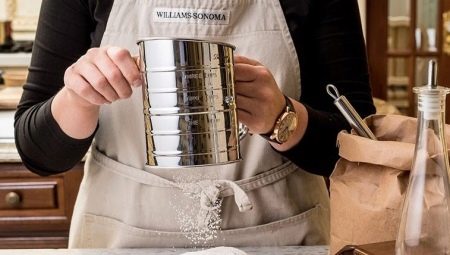
Every housewife knows that cooking is a delicate matter. There are no trifles here, especially when it comes to baking. In order to bake delicious, fluffy bread or fragrant buns, you need to sift the flour. Unfortunately, many refuse this process. The traditional old-fashioned way is unpleasant. Mechanical sieve mugs come to the rescue.
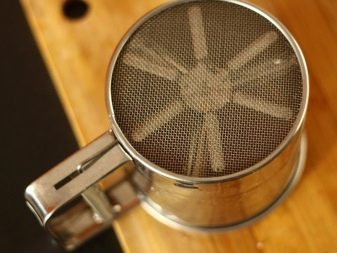
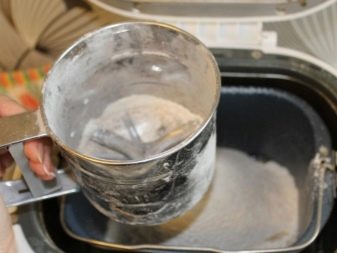
Advantages and disadvantages
Anyone who has ever used a sieve mug has seen a lot of advantages over other forms of cooking utensils.
An unpretentious device invented by our ancestors has not lost its relevance to this day. The essence remained, but the external image changed. Stores present a variety of samples: a sieve-mug, in the form of a cone, a colander-sieve with a handle, a sieve with a lever or a rotating handle. It all depends on the needs of the culinary specialist.
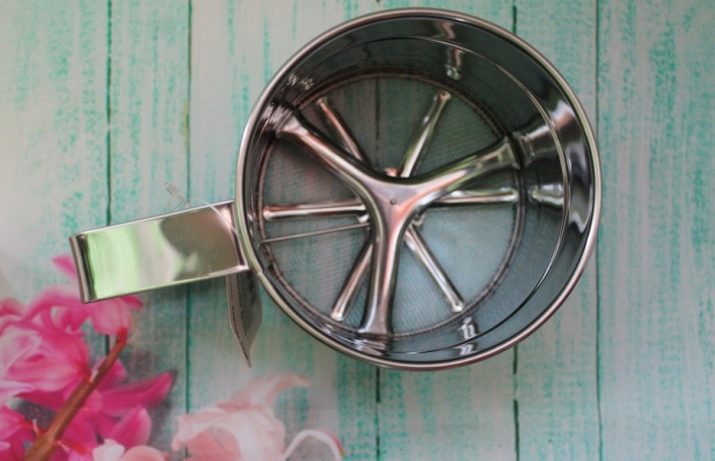
Among the advantages, a number of them can be noted.
- Eliminates foreign matter and foreign particles (bugs, mealworms, starch plates, etc.).
- Sooner or later, even the highest quality raw materials cakes and damp, forming lumps. Sifting helps to get rid of them, making the consistency more uniform. Enriches flour with oxygen, giving it porosity.
- Compactness. The device is small. It will not take up much space in the kitchen.
- Simplicity. Just a few quick movements and no shaking of the sieve.
- Multifunctionality. In the manufacture of bakery products and sweets, use for sifting not only flour, but also other bulk components (cocoa, powdered sugar, starch, spices). With the help of a sieve mug, it is convenient to bread pieces of fish and meat.
- Economy. Thanks to the shape, the contents do not spill over the edges, the consumption is minimal.

There are not many disadvantages. It all depends on the material used by the manufacturer. A metal mug can rust over time, a plastic one can crack. Some people note that the spring can jam. But all these nuances depend on how to use the mug and take care of it.

Materials (edit)
Today, manufacturers produce mugs from a variety of raw materials.
Taking into account what the body is made of, the sieve can be made of wood, plastic or stainless metal.
Wooden are considered classic, but they are becoming less and less. They are less practical and have the ability to absorb all sorts of aromas, which negatively affects the manufacture of bakery products.
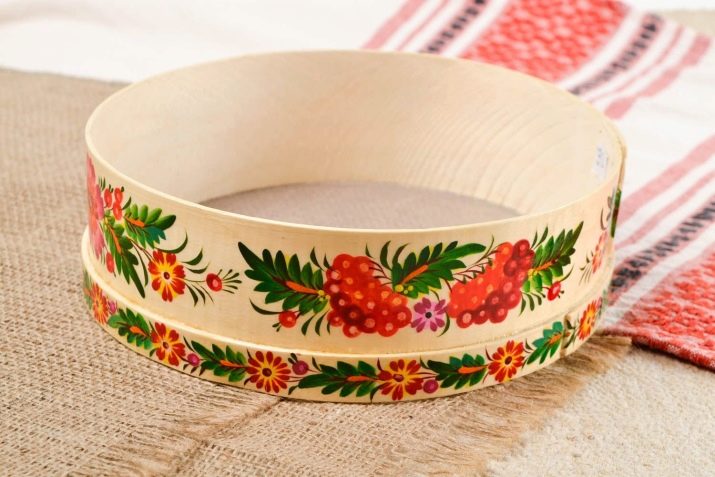
The budget option is a plastic sifter. It is easy to use and does not require any special skills to use. The plastic should be food grade, with a smooth surface, odorless and unnecessary joints.
Do not forget that plastic will dry out and crack over time. Store away from sunlight. In addition, such a thing should not be dropped on the floor, this will lead to mechanical damage to the product.
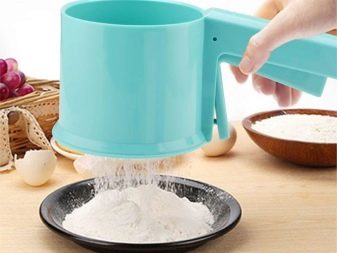
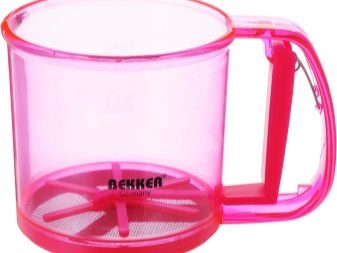
Metal sieves have the best properties. A distinctive feature is strength and durability... Deformation of the body and structural elements is excluded. Easy to clean and dries quickly. This is especially important for those who need additional ingredients.
A sieve made of this material is considered environmentally friendly. Does not react with other food products, which helps to preserve their aroma and color.

Device
The main specificity is the simplicity of the mechanism. At home, mechanical, manual sieves are used. The sieve mug is the simplest but necessary device that can be found effortlessly in hardware stores. It is no coincidence that housewives choose just such a model, considering it the most convenient in everyday life.
It is designed in such a way that any housewife can easily cope with a sieve mug. The design resembles an ordinary mug with or without a lid to ensure airtightness. For convenience, the sieve can be placed on an inverted lid.
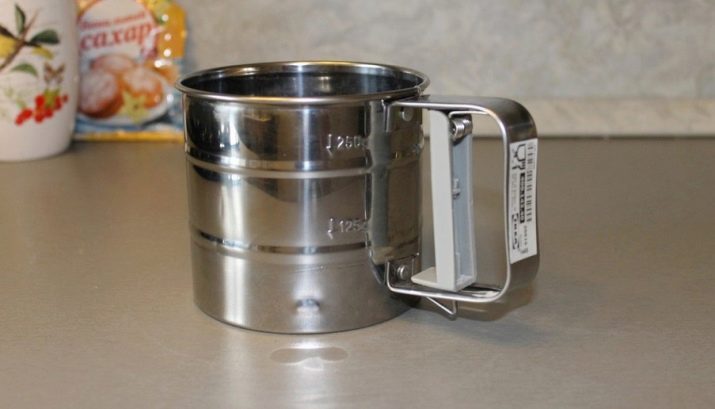
Instead of the bottom, a sieve with metal blades in the shape of a star and a special recess is inserted, which allows the sieving process to be made more efficient. The bottom is double or triple. The glass has a measuring scale with divisions from 50 to 250 mg, with the help of which it is easy to determine the required amount of flour.
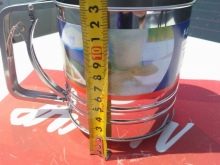

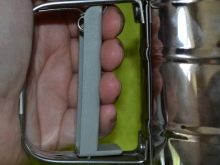
The lever handle consists of two sections with a spring that drives the rotating mechanism. The bucket is comfortable to grip, making the job less labor intensive and faster. Flour is poured, by arbitrary pressing on the handle, the blades are set in motion. The loose ingredient passes through the sieve, pouring out into another container or onto a board. Excess waste, unwanted in the dough, remains in the mug.
A sieve in the form of a mug for sifting flour allows you to keep the work area of the countertop always clean. Positive user reviews confirm this.
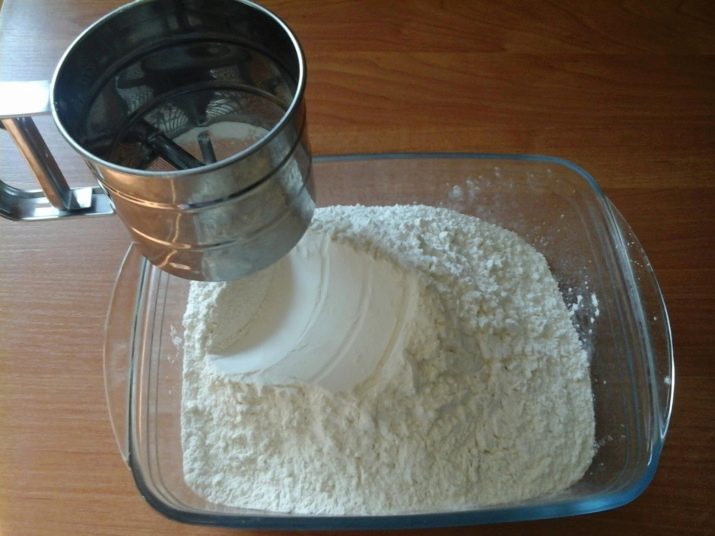
Recommendations for use
When purchasing a new kitchen utensil, any housewife expects that it will serve for many years and will only benefit without causing any trouble. The beautiful and shining appearance of the novelty pleases the eye. The first use of the sieve mug evokes only positive emotions and the desire to cook even more delicious dishes.
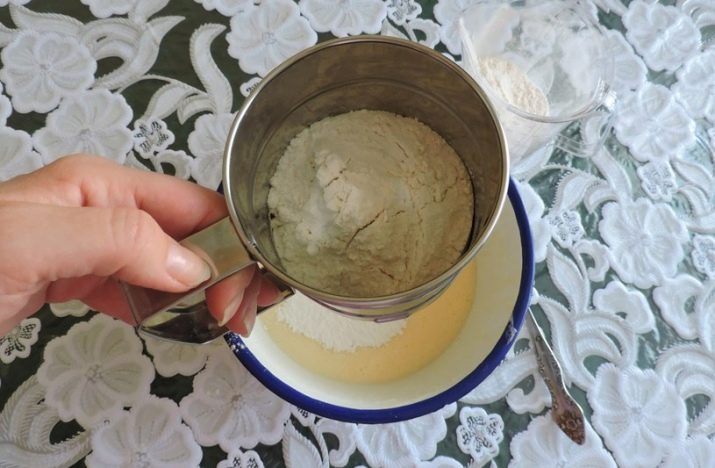
In order for the sieve to retain its impeccable properties, it is necessary to take care of it, follow the elementary rules of care and operation.
- Wash after each use. It is not difficult to clean an important attribute of a cook's utensils. It is enough to rinse with warm water. Dishwasher safe.
- Be sure to wash the sieve in warm water and soap before the first use, rinse and wipe dry.
- For washing, it is best to use a liquid detergent and a regular sponge.In no case is it recommended to use metal scouring pads, chlorine-containing products and loose substances with fine abrasive particles.
- Rinse the sieve thoroughly so that no soap particles remain in the sieve, which may get into the dough in the future.
- Dry the sieve after each wash. This way you can avoid limescale and stains.
- During use, stains may appear on the dishes. They can be easily removed with a vinegar solution or citric acid.
- It is recommended to store it in a dry and clean place.
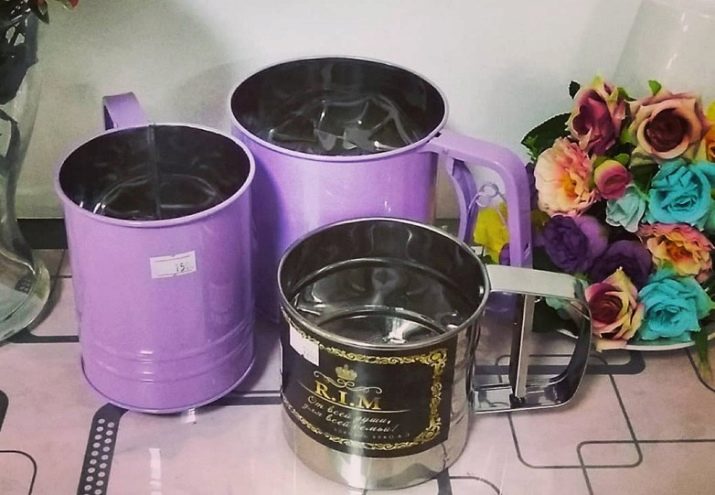
It happens that the mechanism of the unit has broken, a spring has flown out. Most often this happens if you drop the sieve mug. The mechanism of the product shifts when it falls, the flour begins to sift slowly and poorly. You don't want to get rid of your favorite sieve, then there is only one option - insert the spring back and collect the kitchen attribute. It is necessary to gently pull the sieve away from the mug, reach the fastening lever and put it back.
If this does not help, you will have to buy a new sieve. Professional repair is pointless, as it will cost more than a new product.


Selection Tips
When purchasing such an important culinary item, consider some of the nuances.
- It is worth paying attention to the design. The assortment is quite rich. The choice is purely individual. It all depends on how often you use the sifter.
- The cost of this item is usually low, and every housewife can afford to purchase it.
- When choosing, you should take into account the scale, volume of the container and the size of the sieve. Focus on your needs and the products that you are going to use in cooking.
- Cells can be made of polyamide, steel or nylon. Each has its own characteristics. Nylon are inexpensive, but also short-lived. Nylon is destroyed by ultraviolet rays, so it is better to store the product in a closet. Polyamide can sag over time, which is extremely inconvenient. The best option is a stainless steel sieve.
- Give preference to versatile models that combine multiple functionalities with which you can sift more than just the main ingredient.
The hand-made sieve mug is not only an irreplaceable assistant in your kitchen, but also a stylish element of kitchen design!
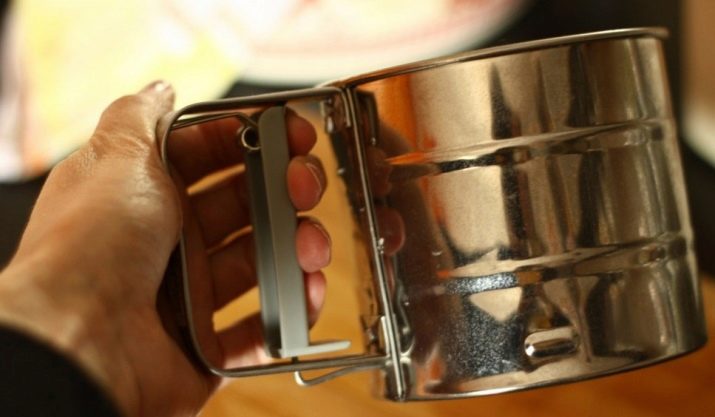
In the next video, you will learn how to properly assemble the parts of a flour sieve mug.








